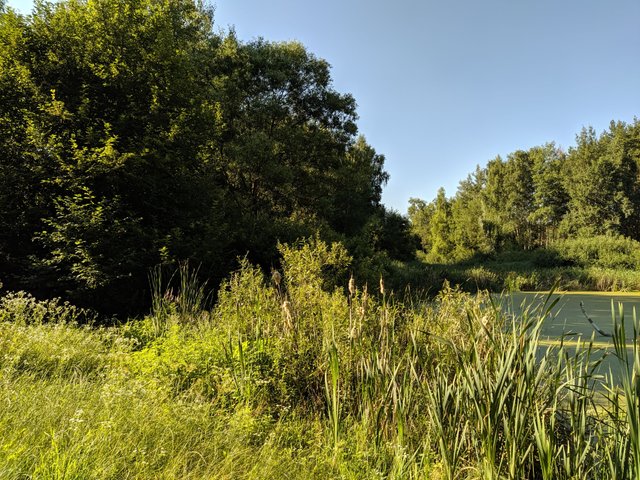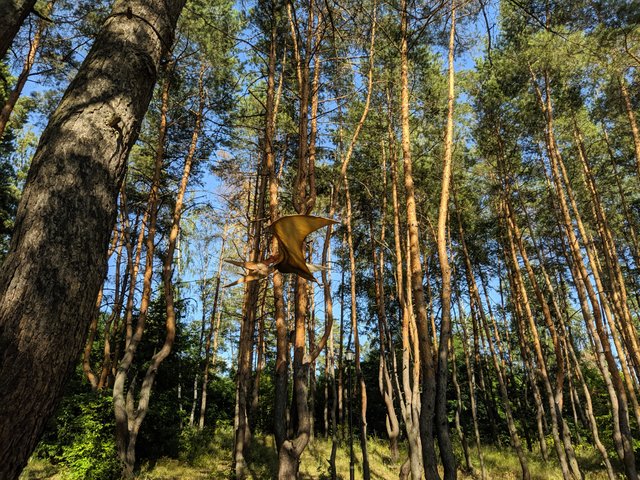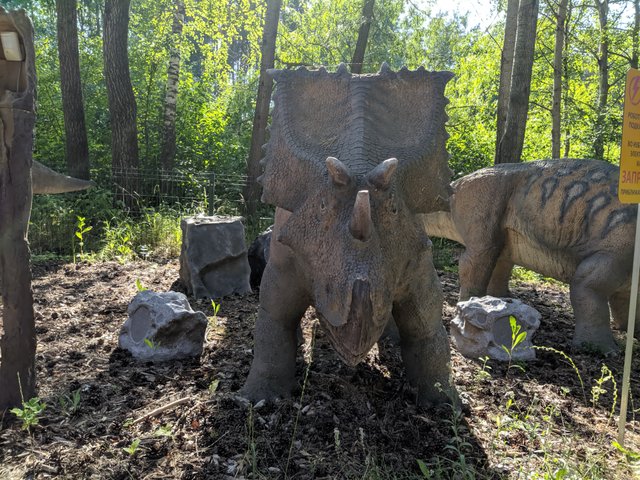Walking with dinosaurs
Millions of years ago, when the faces of the continents were different and the air was thick with the breath of gigantic ferns, the Earth was dominated by creatures whose shadows still lie in the depths of geological time. It was the Cretaceous Period, the age of the Titans, and every dawn here was a prelude to a new struggle for survival.
In the predawn haze that swirled over the floodplain forests of ancient North America, life was awakening. The humid air smells of rotting wood and lush greenery. Herbivorous giants– the triceratops family, come out of the thicket, swaying their massive bodies. Their skins, thick and scarred, bear witness to countless fights. In front of the herd, an old female walks like a living fortress, her huge, ossified mantle and three impressive horns are the perfect weapon of defense. Next to her, clinging to her mother's side, is a clumsy but already strong one-year-old cub. His horns are just beginning to break through his skin, and his shield is still thin, but his survival instinct is already sharpened.
The day begins with the search for food. These mighty creatures, despite their size, feed modestly, tearing off low-growing vegetation with powerful beak-like jaws. Every crunch, every rustle in the undergrowth, every gust of wind carries a potential danger. Their eyesight is not perfect, but their keen sense of smell and sensitive hearing are indispensable tools in a world where death can creep up unnoticed. The herd moves slowly, leaving behind a wide trail of trampled cycads and cycads. The cubs play, poking their muzzles, while their mothers carefully inspect the horizon. It's just a brief moment of calm.
But not every life here is peaceful. Somewhere in the distance, in the dense undergrowth, another shadow is moving. Her footsteps shake the ground, and the roar, when she decides to make it, makes birds fly up in panic, and small reptiles freeze in horror. This Tyrannosaurus rex is the top of the food chain, the ultimate killing machine. His powerful jaws are capable of crushing bones, and his short but muscular paws carry him with the speed of a leopard. This male is young, but already huge, and he is hungry. His blunted teeth, the size of bananas, are ready to sink into the flesh. He can smell triceratops–their characteristic, tart scent, flavored with a slight scent of fear.
The old triceratops female is the first to detect a change in the air. An invisible thread of tension runs through the herd. She raises her head, her eyes scanning the tree line. A deep, low exhale shakes her body. The rest of the triceratops react instantly: the cubs hide under the massive bodies of the adults, the males stand in a defensive stance, forming a living wall of horns and shields.
Suddenly, the bushes part. A giant predator enters the clearing, its eyes, like two coals, boring into the target. He takes a few tentative steps, assessing the situation. His body is tense, his tail is balancing like a pendulum. Triceratops don't run away–their strength lies in resistance. They stand motionless, only shaking their heads rhythmically, as if preparing for a death dance.
The tyrannosaurus lets out a deafening roar designed to sow panic, but the old female triceratops does not give in. She lowers her head, aiming her central horns at the predator. The cub behind her is trembling, but not running. An attack is imminent. The Tyrannosaurus rushes forward, the ground shaking under its weight. The mighty tail works as a counterweight. He aims for the side, where the skin is thinner, but the female triceratops reacts faster than one would expect from such a massive creature.
She turns around, exposing her shield and horns. A collision is a thud that shakes the air. The Tyrannosaurus recoils, its paw slashed, and its teeth only scratch the hard shell. He rushes again, trying to bypass the protection, but the triceratops, like a single organism, move, maintaining their formation. The old female makes a short but powerful lunge, her horns almost reach the predator's throat. Rage mixed with disappointment flashes in the Tyrannosaurus's eyes. This prey is too well protected. The risk is too great.
With a loud snort that sounds almost like an expletive, the Tyrannosaurus turns around and disappears back into the thicket. He will be looking for easier prey.
The tension in the herd is easing. Triceratops slowly relax, but their vigilance remains. The day continues. The little cub clings to its mother, as if seeking comfort. He learned his first, important lesson of survival: in this ancient world, where every day is a struggle, only strength, instinct and cohesion allow you to get through the storms of the Mesozoic. And so it will continue for millions more years, until one day a new species will appear on this earth, able only to guess at the shadows of the giants that once ruled the world.



Upvoted! Thank you for supporting witness @jswit.
Hi, @steemit.contest,
Thank you for your contribution. Your post has been manually curated.
- Delegate to @ecosynthesizer and vote @symbionts as a witness to support us.
- Explore Steem using our Steem Blockchain Explorer
- Easily create accounts on Steem using JoinSteem
Millions of years have passed, but practically nothing has changed in this World, the essence has remained the same: you will eat someone or you will be eaten.